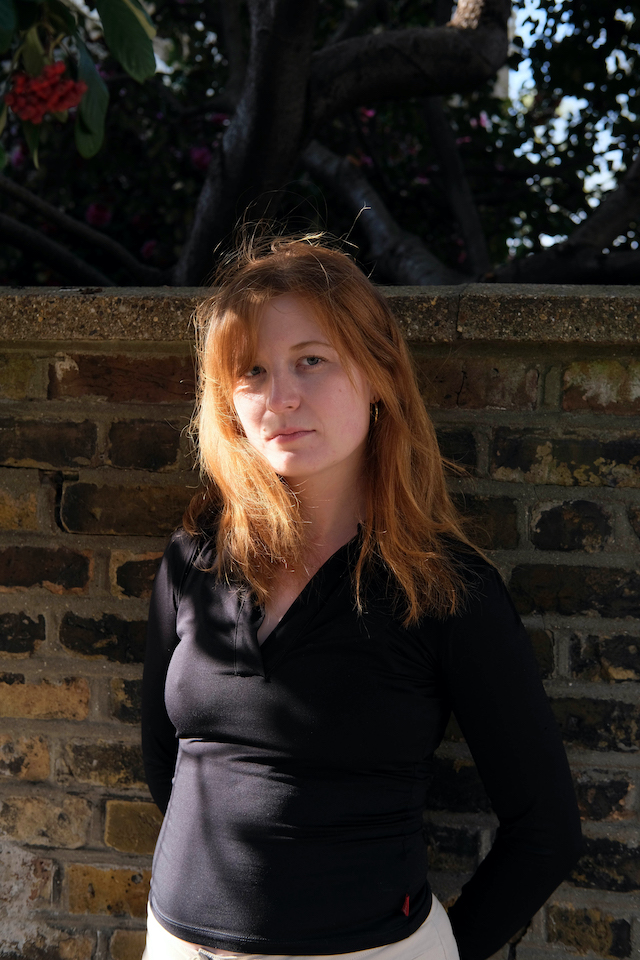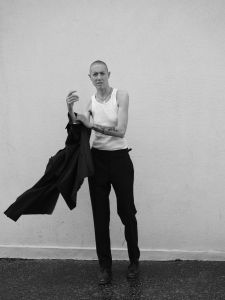In an excerpt from her newly published book – Ethical Portraits – Hatty Nestor talks to Heather Dewey-Hagborg about her artwork that resists surveillance and gender binaries

While researching facial recognition techniques and uses of DNA, I emailed Heather Dewey-Hagborg, an artist whose work exposes the dangers of data collection and identity. By mimicking the processes undertaken by law enforcement – primarily, producing portraits based upon DNA samples collected from strangers – she creates images that stand in resistance to surveillance. For Stranger Visions (2012-2013), she collected cigarette butts and chewing gum to create composite portraits of strangers. Dewey-Hagborg began communicating with Chelsea Manning in 2015, when she was incarcerated in Fort Leavenworth, with the intention of creating – much like Alicia Neal’s portrait – an alternative public representation of her. Given the circumstances, using forensic methods of representation seemed appropriate: Manning’s gender status had been denied by the prison system, she had been misrepresented visually and physically, and through her incarceration she had, in her own way, been rendered a missing person.
After communicating via mail, Manning sent Dewey-Hagborg hair clippings and two swabs which she placed in a plastic fruit punch bag from the Joint Regional Correctional Facility at Fort Leavenworth. Together, they decided to create two portraits: one to reflect Manning’s female gender, and one gender neutral image intended to demonstrate the reductionism of forensic recognition. Their collaboration materialised as a form of activism, and Dewey-Hagborg was delighted to generate visibility for Manning while subverting algorithmic systems of facial recognition and portraiture. What emerged were two portraits collectively titled Radical Love (2015). They function as a homage to Manning, while also dismantling genetic data as absolute, restating that it is our liberty and right to represent ourselves how we see fit. Probably Chelsea, a series of 30 different portraits of Manning created from DNA analysis in 2017 and exhibited at Fridman Gallery, New York, is an extension of Radical Love.
Dewey-Hagborg’s portraits seek to uncover the dominant narratives surrounding who is considered eligible and worthy of representation, and who is deemed the author of their own image, while shaking off outdated notions of genetic essentialism. They also demonstrate how solidarity with the incarcerated can begin with a single strand of hair.

Phone interview conducted between Hatty Nestor and Heather Dewey-Hagborg, January 2018 between New Mexico and Berlin.
Hatty Nestor: The constraints placed upon Chelsea Manning while she was in prison meant that she had little control over her identity or the distribution of her portrait. As an artist, what was your role in generating visibility for her through portraiture?
Heather Dewey-Hagborg: Years before I met Chelsea, I started developing this process of creating portraits of people from abandoned DNA. I would extract DNA from found genetic artefacts like cigarette butts and hair, then, using software that I wrote, I would turn that genetic information into algorithmically generated 3D portraits, which I would also 3D print in full colour, and exhibit alongside the material and the data.
In 2015 I was contacted by Paper Magazine, who were interviewing Chelsea through the prison mail system, and were interested in having an image to accompany the interview. At the time she couldn’t be visited or photographed, and they had discussed the idea of me creating a DNA portrait. Chelsea was excited about the concept and had read about my work before, and her only concern was that she didn’t want to appear too masculine. When they contacted me, I realised that this was a great opportunity to both pay homage to Chelsea Manning, whose heroism I admire, and also to use the technology for good, by giving her the public face that had been taken from her. And, simultaneously, in a kind of double gesture, to deconstruct this technology itself, to call attention to some of its shortcomings and reductions.
What was the process of removing Chelsea’s DNA from prison?
I hadn’t met Chelsea in person. She collected some hair clippings when she was getting her haircut. She also took two Q-tips and swabbed the inside of her mouth, and mailed these from prison to her lawyer. Then the lawyer sent me a Fed-Ex envelope with the materials. At the time I was working at a lab at the Art Institute of Chicago.
With the early portraits I made, I wanted to show the reductionism around gender and sex in particular. After the first portraits commissioned by Paper Magazine in 2015, the prints were exhibited at the World Economic Forum in 2016, after which Chelsea and I stayed in touch, and worked together on a short graphic short story called ‘Suppressed Images 2016’ that we published as part of her clemency campaign. In the comic we forecast the idea of Obama commuting her sentence, and Chelsea being freed and being able to come and see an exhibition of portraits of herself for the first time. We published the comic on the morning of 17 January, and then that afternoon Obama commuted her sentence. It was an unbelievable and emotional experience.
After that we began developing ideas, drawing on Chelsea’s writing, and the discussions we’d had in our letters about reductionism and biometric portraiture. Our ideas addressed ancestry and the social construction of race, what else can be done with this kind of technology, and how to use it proactively. This led to the idea of showing even more variations of her portrait, to demonstrate just how subjective the interpretation of DNA data is, and how diverse she could look based on the same information.

The first portraits were a pair called Radical Love. After this, you made Probably Chelsea: 30 portraits of Chelsea, which are all aesthetically different, exhibited in ‘Becoming Resemblance’ at the Fridman Gallery, New York. Looking at them initially you wouldn’t necessarily say they’re reconstructions of the same subject. They show how identity isn’t necessarily fixed to a single outer appearance or prescribed gender.
The portraits are about exploding outmoded ideas of biologically inscribed identity, refuting stereotyped representations of phenotypical characteristics, and using a scientific and data-driven process to show how many different readings there are of the same data.
How were the portraits received? Do you think you raised the questions that you wanted it to, about gender and the prison-industrial complex?
Radical Love premiered at the World Economic Forum in January of 2016, if I remember correctly. That, especially from an activist angle, was a practical place to begin. The later work, Probably Chelsea, in a way is a kind of celebration. It’s a celebration of Chelsea’s release. It’s a celebration of the genetic commonality that we all share. In a sense it’s much lighter and more playful and fun. It’s more of an art installation, and also an opportunity for Chelsea to enter into being an artist, and being seen as an artist. In answer to the question, the reception has been positive.
The new piece with the 30 portraits is just beginning to travel, so let’s see what kind of impact it has. It’s a little too early to say since we’ve only shown it once for the opening in New York. Now it’ll go to Berlin, and Frankfurt, and all over the place after that. So let’s see what kind of impact that has.
It seems crucial to consider how Radical Love aids Chelsea’s visibility and representation now that she has more control over it. There was a fantastic release of images of her in Vogue in August 2017, for example, where she is wearing a black sweater and standing against a wall. Your early portraits act as an archive of what wasn’t possible, and I wonder how their purpose has changed.
Radical Love, the two portraits, served as a kind of document of their time. The 30-portrait piece, Probably Chelsea, was always something different. It was meant to be shown after she was released, and was expected to be an exploration of different kinds of ideas around identity and challenging identity inscription. It was always intended for her to see upon being free.
Excerpt taken from Ethical Portraits: In Search of Representational Justice, published by Zer0 books




